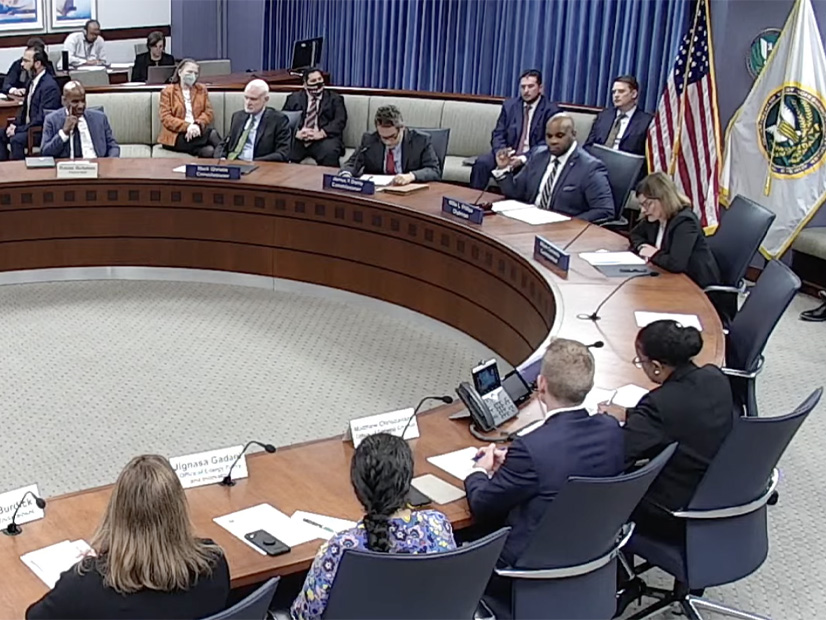FERC issued a final rule Thursday directing NERC to develop standards to improve the reliability of inverter-based resources (RM22-12).
The final rule, which had not been posted as of Thursday evening, covers solar photovoltaics, wind, fuel cell and battery storage, which make up most of the projects in the interconnection queues.
It followed a Notice of Proposed Rulemaking last November. (See NERC Pushes Alternate IBR Standards Timeline Response to NOPR.)
“These standards will help us solve one of the biggest problems we’re facing as we make the transition to clean energy resources,” FERC Chairman Willie Phillips said at the monthly open meeting. “We need to make sure that these promising new technologies can enhance, not weaken, reliability of the grid. We mean it when we say that at FERC, reliability is, and remains, Job No. 1.”
NERC was directed to develop rules addressing IBR data sharing, model validation, planning and operational studies, and performance standards. The reliability organization has to submit the rules in three tranches, with each one due no later than Nov. 4 over each of the next three years.
The order gives NERC 90 days to make a filing that includes a detailed, comprehensive standards development and implementation plan.
IBRs use electronic devices that change the direct current power produced by generators into alternating current power that is then transmitted on the bulk electric system. The concern is that IBRs can respond to grid disturbances differently from traditional resources; at least 12 events have occurred on the bulk power system in which 1,000 MW of IBRs tripped offline, showing the risks they can pose absent reforms, Phillips said.
“We have a lot of clean energy and renewable energy resources that are being connected to the grid. And this new rule is a great step to address what we see as reliability concerns regarding this transition” Phillips said during the open meeting.
“When appropriately programed, IBRs can provide operational flexibility. And the ability of IBRs to perform with precision, speed and control could mitigate disturbances on the bulk power system,” he added.
Commissioner James Danly called the rulemaking “long overdue” and the “most important action we’ve taken on reliability in the last year or two.”
Commissioner Allison Clements said IBRs offer “an exciting opportunity for dynamic response and for increased operational flexibility.”
She said she was disappointed that the final rule only directs NERC to consider requiring transmission owners to share data with IBR resources. She said NERC should require such sharing be required.
“The record in the preceding indicates the generator owners require data to support the modeling and performance requirements we are now directing NERC to create,” she said. “I think it’s kind of tough to make people bake the cake without giving them the recipe.”
Clements said most current IBRs in place today should be able to meet the updated standards with simple software updates, but some older models may not be able to do so.
The rule directs NERC to consider exceptions for these older IBRs. “I hope to see such exceptions, as doing so will allow these older resources to continue to provide value to customers without compromising system reliability,” she said.



